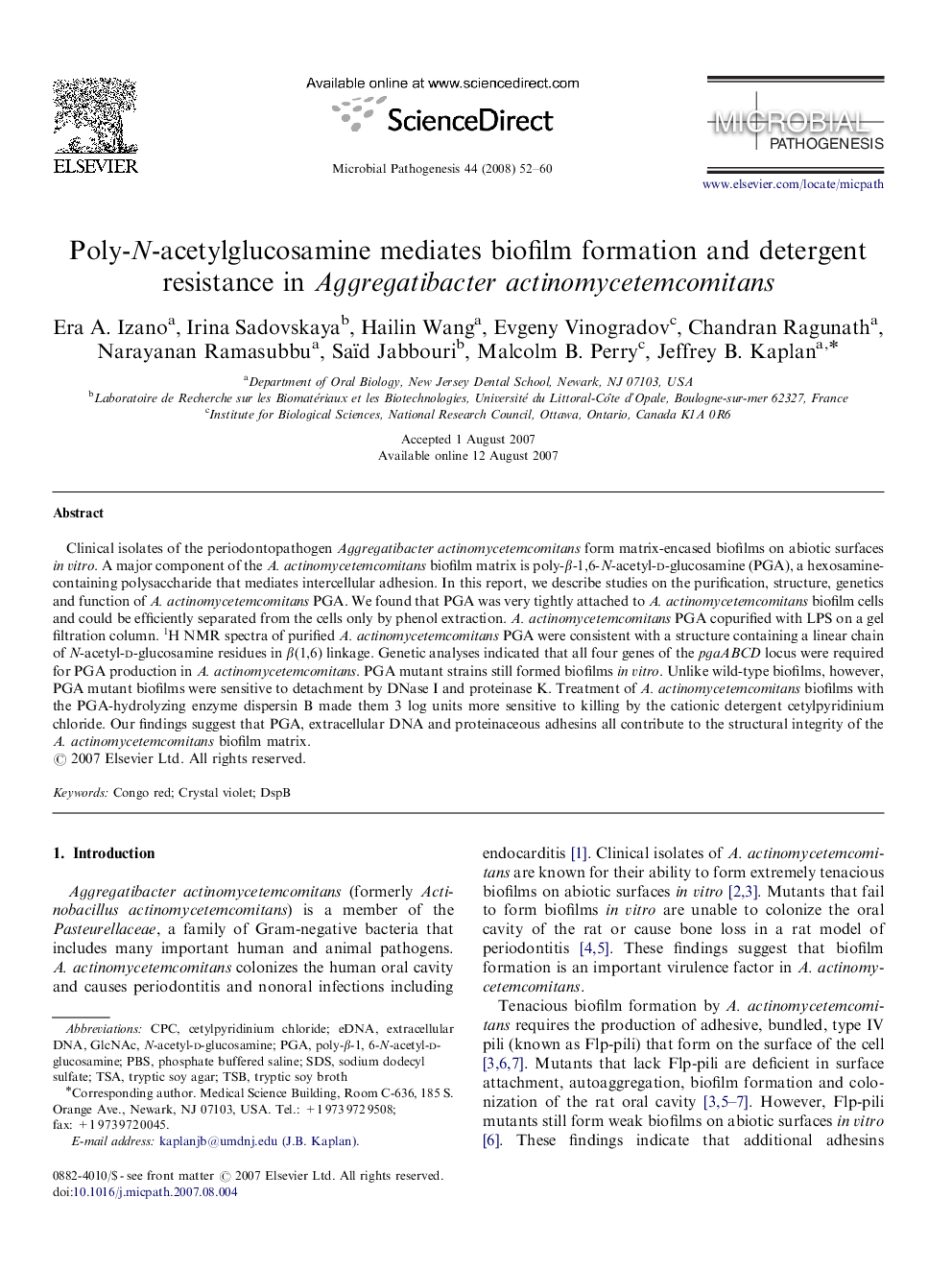| Article ID | Journal | Published Year | Pages | File Type |
|---|---|---|---|---|
| 3417223 | Microbial Pathogenesis | 2008 | 9 Pages |
Clinical isolates of the periodontopathogen Aggregatibacter actinomycetemcomitans form matrix-encased biofilms on abiotic surfaces in vitro. A major component of the A. actinomycetemcomitans biofilm matrix is poly-β-1,6-N-acetyl-d-glucosamine (PGA), a hexosamine-containing polysaccharide that mediates intercellular adhesion. In this report, we describe studies on the purification, structure, genetics and function of A. actinomycetemcomitans PGA. We found that PGA was very tightly attached to A. actinomycetemcomitans biofilm cells and could be efficiently separated from the cells only by phenol extraction. A. actinomycetemcomitans PGA copurified with LPS on a gel filtration column. 1H NMR spectra of purified A. actinomycetemcomitans PGA were consistent with a structure containing a linear chain of N-acetyl-d-glucosamine residues in β(1,6) linkage. Genetic analyses indicated that all four genes of the pgaABCD locus were required for PGA production in A. actinomycetemcomitans. PGA mutant strains still formed biofilms in vitro. Unlike wild-type biofilms, however, PGA mutant biofilms were sensitive to detachment by DNase I and proteinase K. Treatment of A. actinomycetemcomitans biofilms with the PGA-hydrolyzing enzyme dispersin B made them 3 log units more sensitive to killing by the cationic detergent cetylpyridinium chloride. Our findings suggest that PGA, extracellular DNA and proteinaceous adhesins all contribute to the structural integrity of the A. actinomycetemcomitans biofilm matrix.
